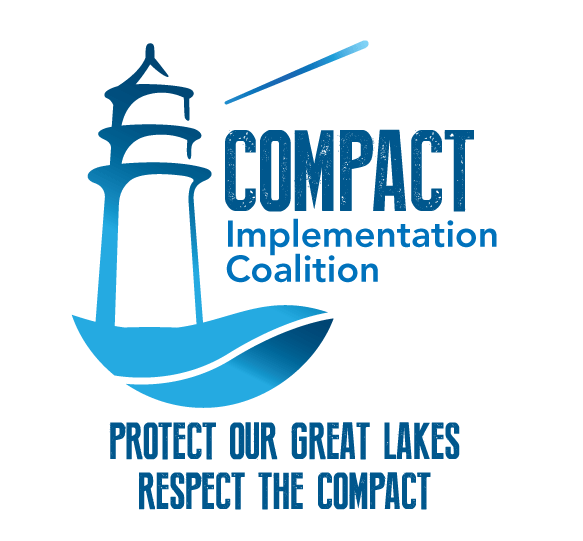Non-Diversion Solution provides Waukesha with abundant supply of safe, clean drinking water
WAUKESHA — A new, independent analysis shows that Waukesha can provide more than enough clean water to its residents now and in the future, without diverting water from Lake Michigan. The Non-Diversion Solution will save Waukesha taxpayers tens of millions of dollars and provide safe, clean drinking water for decades to come. Authored by two engineering firms, the analysis outlines a proven, established, and common sense solution for Waukesha residents that helps avoid a precedent-setting Great Lakes diversion will increase Waukesha residents’ average annual water bills by at least 250% by 2024.
“Waukesha says no other option besides taking water from Lake Michigan will work, but our independent analysis, based on concrete scientific evidence and research, challenges those conclusions,” said James Drought, Principal Hydrologist and Vice President of GZA GeoEnvironmental, Inc., one of the firms that conducted the analysis. “Our work shows Waukesha can rely on existing groundwater wells and other infrastructure investments as the cost-effective, technically feasible alternative to provide its residents drinking water that meets water quality standards for the foreseeable future.”
In light of this information and their own legal analysis, a diverse group of environmental organizations known as the Compact Implementation Coalition (CIC) is calling on the DNR to deny the City of Waukesha’s request for Great Lakes water.
The report finds that the Non-Diversion Solution:
- will save residents over $150 million compared to the Great Lakes diversion. The Great Lakes diversion would cost a preliminary $334 million for Waukesha ratepayers, according to the Waukesha Water Utility, while the Non-Diversion Solution would cost an estimated $174 million,
- meets public health standards for radium and other contaminants with a robust treatment process, included in the Non-Diversion Solution’s cost estimates,
- will adequately supply a growing population within the existing city limits until at least 2050, and
- requires no additional wells, which means there is no environmental impact to surrounding wetlands, surface waters or to the deep water aquifer.
The proposed Non-Diversion Solution is consistent with the CIC’s legal analysis of Waukesha’s Great Lakes diversion proposal, which finds that the proposed expanded water supply service area in the application does not meet several key requirements of the Great Lakes Compact. Much of the land that would be served by the proposed Great Lakes diversion lies in four adjacent communities, which have not demonstrated the need for Lake Michigan water and cannot comply with the Great Lakes Compact’s water conservation requirements.
“Waukesha is requesting Great Lakes water under the pretext of having no other alternative. The report shows that, in reality, Waukesha is choosing to apply for Great Lakes water to allow for unchecked development outside of its city limits at the expense of ratepayer dollars and the health of the Great Lakes,” says Peter McAvoy, of Counsel to the CIC. “The Great Lakes Compact only allows for an exception to the ban on water diversions for communities in counties that straddle the Great Lakes Basin such as Waukesha as a last resort, not as a preferred alternative for mere convenience or economic growth. Fully exploring this Non-diversion Solution is an obligation Waukesha has failed to meet.”
The CIC’s experts concluded that Waukesha can continue to use its existing shallow and deep groundwater wells and focus new investment in treatment facilities to manage for radium and other contaminants, as Waukesha’s neighbors such as City of Brookfield, City of Pewaukee, and others do. This alternative is cheaper and provides the City of Waukesha with reliable and healthy water supplies for today and into the future.
“We have always suspected that Waukesha has a viable solution that does not require a Great Lakes diversion, in part because Waukesha’s application did not thoroughly vet their best non-diversion option. Our watchdog coalition retained additional experts at our own expense to identify this solution which really should have been a no-brainer for the City of Waukesha in the first place,” said Ezra Meyer, Water Resources Specialist at Clean Wisconsin. “Rather than impose a massive rate hike on residents to pay for the proposed Great Lakes diversion, as predicted by Waukesha Water Utility’s own calculations, the Non-Diversion Solution costs tens of millions of dollars less, provides Waukesha residents with access to a clean, sustainable and healthy water supply, respects the Great Lakes Compact, and protects Great Lakes water for future generations.”
“The CIC continues to be sympathetic to Waukesha’s challenges in dealing with contamination of the city’s groundwater supply by naturally occurring radium,” said Jodi Habush Sinykin, an attorney with Midwest Environmental Advocates. “However, Waukesha has a duty to supply clean water to its community in a way that is responsible. The Non-Diversion Solution uses sound scientific analysis to achieve this goal, at considerably less cost than Waukesha’s diversion plan, all while protecting the Great Lakes and the welfare of Waukesha residents.”
The DNR released its draft environmental impact study and preliminary decision on Waukesha’s diversion application on June 25, 2015. Comments on both are being accepted until August 28, 2015 at DNRWaukeshaDiversionApp@wisconsin.gov. The CIC urges concerned citizens to attend hearings, submit comments and stay apprised of any further developments by visiting www.protectourgreatlakes.org.
